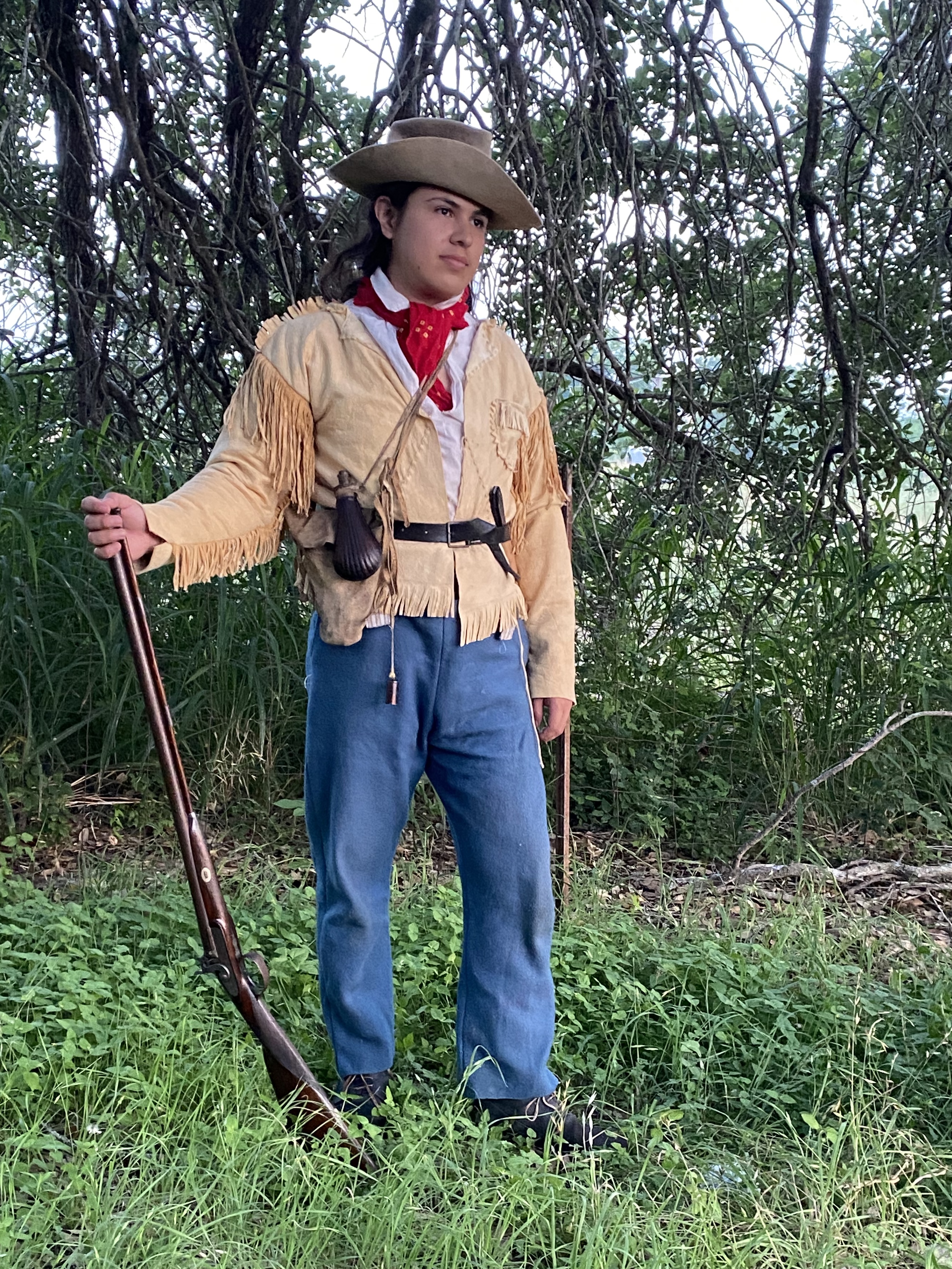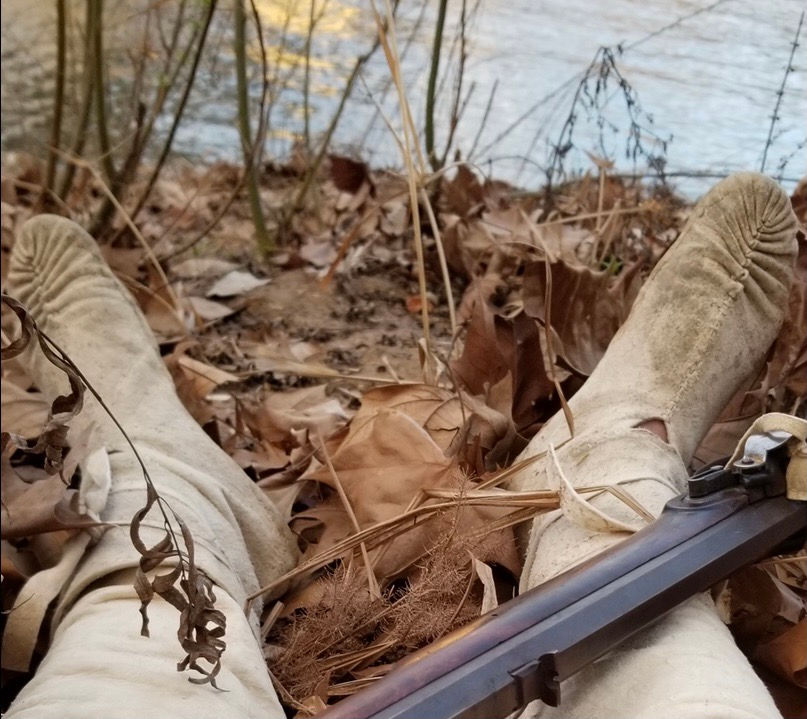“A Decent Way of Going Barefoot”
- David Sifuentes

- Feb 27, 2021
- 5 min read

Boots being an unknown quantity, some wore shoes and some moccasins. Here a broad brimmed sombrero overshadowed the military cap at its side; there, a tall "beegum" rode familiarly beside a coonskin cap....” Noah Smithwick
Texas in the 1830’s was a hodge podge of frontier utility and an attempt to stay abreast of the latest fashions. Additionally, there were many distinct cultures each with their own ideas of what was practical. One can see these elemental details and differences in the homemade footwear of the time. Moccasins had been wore on the continent for thousands of years and various regional styles had emerged to best serve the needs of their wearers.
Anglo settlers were for the most part from the Old South, many of whose immediate ancestors were Over-the-Mountain-Men or market hunters in the Middle Ground who had been in contact with Atlantic/Eastern Woodland cultures for almost one hundred years prior. Major cultural exchanges occurred in this span of time, including an adaption of Indian dress.
“A pair of drawers or breeches and leggins were the dress of the thigh and legs; a pair of moccasins answered for the feet much better than shoes. These were made of dressed deer skin. They were mostly made of a single piece with a gathering seam along the top of the foot, and another from the bottom of the heel, without gathers as high as the ankle joint or a little higher. Flaps were left on each side to reach some distance up the legs. These were nicely adapted to the ankles and lower part of the leg by thongs of deer skin, so that no dust,
gravel or snow could get within the moccasin.”
-Joseph Doddridge


The moccasin Austin, Bowie, Houston, and Crockett would have been familiar with had been the mainstay of most tribes east of the Mississippi from Florida to New York for several centuries. Soft-soled Pucker Toe moccasins were expedient to make, which mattered when it would only take on average 3 days to wear a hole through a pair. Indian warriors on a raid would carry 20 or more pairs to ensure their feet would remain shod throughout their journey. They were the most practical for their environment and were adopted by both the Anglo and Spanish cultures within their sphere of dominance.
Nevertheless, there were some disadvantages. The stereotype that one can walk silently through the woods is certainly true to an extent, the wearer would feel his way over the debris on the forest floor and shift his weight accordingly hopefully not breaking the dry twigs beneath him. This sensitivity is not exclusive to twigs and leaves though, the wearer could also feel every rock or pebble he accidentally would step on. Some would sew an additional sole on the bottom of their moccasins to combat this and also to increase the longevity of their footwear.
An even more important disadvantage that applied to all styles of moccasins is the fact that brain tan naturally absorbs copious amounts of water. To better illustrate this point, brain tan and modern chamois are both manufactured in a very similar way and have similar properties. It was written during the period that wearing moccasins was “a decent way of going barefoot” and many frontiersmen would find themselves suffering from rheumatism later in life due to their feet constantly being wet in all seasons. Some would rub greases and oils into their moccasins to make them less susceptible to water. The problem soon found was that a greased moccasin dries much more slowly once it finally does become wet unlike it’s untreated counterpart.
A third disadvantage is that thin deerskin alone makes a poor insulator in the cold weather. Many would make larger moccasins in the winter and stuff them with leaves and animal hair to keep warm. All these factors would certainly encourage an adoption of commercial footwear as soon as possible.
By the early 19th century, the Eastern tribes themselves had advanced beyond their original boundaries to escape encroachment, and by the 1820’s Texas soon became a haven for tribes such as the Cherokee, Delaware, Shawnee, and Coushatta.
"Their dress combines elegance and simplicity. The head is wrapped in a sort of turban. A short frock coat, ornamented with fringe, covers the body. Red stockings, with a kind of short, tight fitting trousers, and slippers of deerskin completes the costume.” -Jean Louis Berlandier

Although the Anglo culture and the Eastern tribes would have had a major presence in Texas by the 1820‘s-30’s, there were others who had been longer established. Coastal tribes such as the Karankawa would have been most accustomed to a barefoot existence, but tribes such as the Kiowa, Tonkawa, Lipan, and even the Comanches (late comers to Texas so they be) had all developed a fairly standard form of footwear, the side seam moccasin.
“There is some variety in the dress in vogue among the different tribes; though they all use moccasins, leggins, flap or breech-clout, and, when not in active pursuits, they generally wrap their bodies in buffalo rugs, blankets or mantles of strouding, according to their wealth or opportunities. Some of the northern tribes display considerable ingenuity and taste in the manufacture of moccasins. But this is the work of the women, who often embroider them with beads and colored porcupine quills, in a most beautiful manner.” -Josiah Gregg


Side seam moccasins were the predominant style of the plains although they originally are thought to have emerged from northern cultures closer to the Great Lakes. Their manufacture is expedient and yields adequate footwear. Like their pucker toe cousins, they have a soft sole susceptible to wear, but the equine cultures of the plains had the advantage that their own feet did comparatively little of the walking. Many of their moccasins reflect this fact in their decorations; they were adorned greatly with bead and quillwork and with fringe of exaggerated length sewn along the top of the foot or at the base of the heel that would certainly trip someone who walked more often than rode.
This last style of moccasin arose from a desert existence, originally from the high deserts of New Mexico and Arizona. It was designed by the Navajo and Pueblo tribes but arrived to Texas with European modifications. The Norteño Tegua was well adapted to its environment, it’s predecessor, the kaibab, had a distinct rawhide sole which quickly gained the attention of the Spaniards who soon began to trade and manufacture their own. The style of shoe they made kept the same basic design techniques but incorporated lacing and the upper was of two piece construction instead of the original one piece.


Turn shoes such as these would have been found across the Spanish Southwest in some variety from Alta California across to Texas. Mestizo vaqueros, men of mixed blood and culture, would certainly have appreciated shoes of this design to traditional moccasins constantly spending their time in the saddle with their large toweled spurs jangling at their heels. Nevertheless these shoes would also quickly give way when prolific Anglo trade introduced the riding boot in copious quantities.
In later posts, instructional guides will be written showing all the steps necessary to manufacture these three pair of moccasin, allowing the reader to quite literally walk in the footsteps of history and to have a more tangible sense of life in early Texas.




Comments